Seoul is a high-tech and modern Asian metropolis, where life flies by at a frantic pace. However, the city boasts not only futuristic landscapes, it has preserved many monuments of traditional Korean architecture. Right in the center is the village of Bukchon, where residents do not notice the bustle of the city. In the midst of magnificent parks, the majestic palaces of the Joseon Dynasty are frozen in time.
There are many atmospheric neighborhoods and streets in Seoul, such as Insadong, Myeongdong or Daehanno. The modern look of the city is in harmony with the Asian flavor. In addition, the Korean capital has many green parks where you can enjoy the beauty of nature and relax after a walk in interesting places.
What to see and where to go in Seoul?
The most interesting and beautiful places for walking. Photos and a short description.
- Gyeongbokgung
- Changdeokgung
- Changgyeonggung
- Deoksugung
- Myeongdong shopping area
- Gwangjang Market
- Insadong area
- Bukchon Village
- Cheonggyecheon
- Temple of Chogyesa
- Jongmyo Shrine
- Bongeunsa Temple
- Myeongdong Cathedral
- Republic of Korea War Memorial
- National Museum of Korea
- National Folk Museum of Korea
- Seoul Arts Center
- Theater NANTA
- Leeum - Samsung Art Museum
- Seodaemun Prison
- Ewha Women's University
- Dongdaemun Design Plaza
- Olympic Park
- Rainbow Fountain Bridge
- Seoul tower
- COEX Aquarium
- Amusement park Lotte World
- Hangang Park
- Namsan park
- Bukhansan National Park
gyeongbokgung
An imposing royal palace built in 1394 during the Joseon Dynasty. After the Japanese invasion in the 16th century, some parts of the complex were destroyed. Reconstruction took place only in the middle of the XIX century. In total, Gyeongbokgung has more than 300 buildings and about 6,000 rooms. During the Japanese occupation of the Korean Peninsula, the residence of the Governor-General was located here.
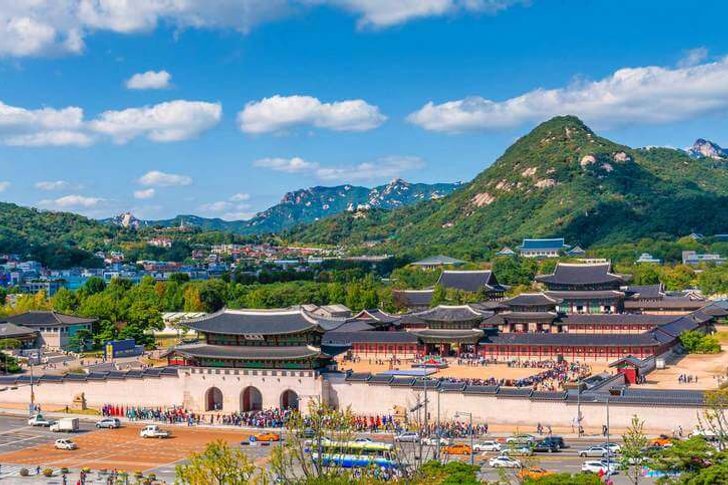
Changdeokgung
Another palace complex of the Joseon Dynasty, built in the early 15th century. Unlike Gyeongbokgung, it suffered more damage during the wars with Japan in 1592-98. In 1609, Changdeokgung was practically rebuilt from ruins. Until the second half of the 19th century, the royal court and government were located here (until Gyeongbokgung was reconstructed).
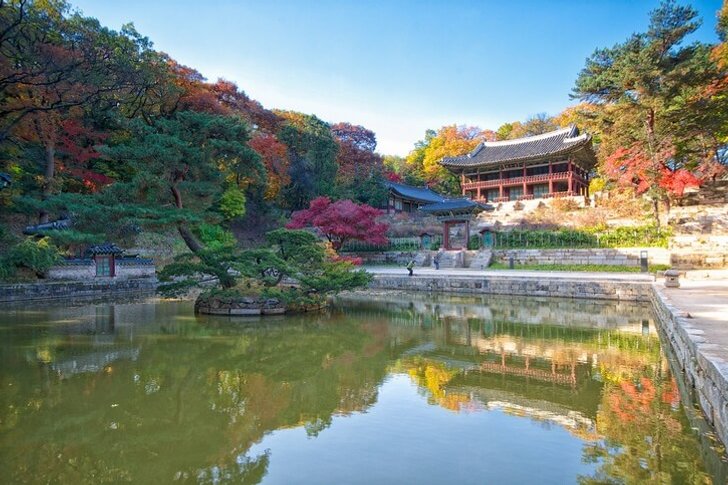
Changgyeonggung
Translated from Korean, the name "Changyeonggun" means "unbridled fun." This palace was erected at the beginning of the 12th century and was intended for recreation and entertainment of the royal court. The complex is surrounded by a picturesque park, where gazebos, pagodas and pavilions are scattered. Today, performances and historical costume processions are held on the grounds of Changgyeonggung, where people in colorful costumes depict scenes from court life.
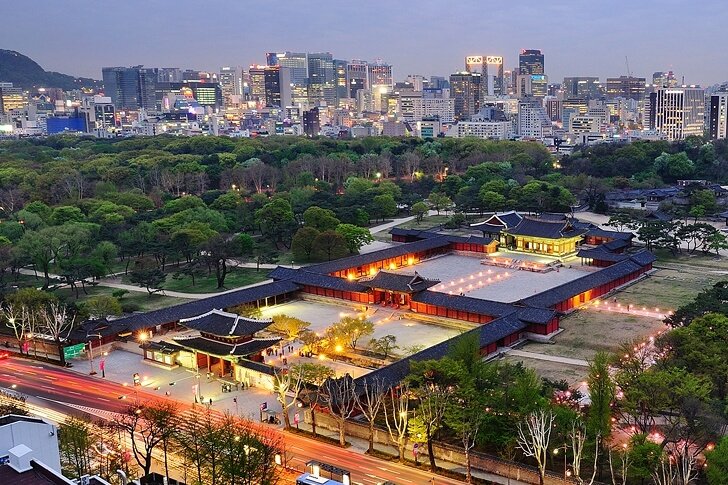
Deoksugung
Deoksugung Palace has a symbolic meaning for the people of South Korea. The fact is that since the end of the 19th century, the emperor lived here, during which the centuries-old history of an independent state ended and it became an occupied territory. The structure is rather modest in size compared to other palace complexes of the Joseon Dynasty.
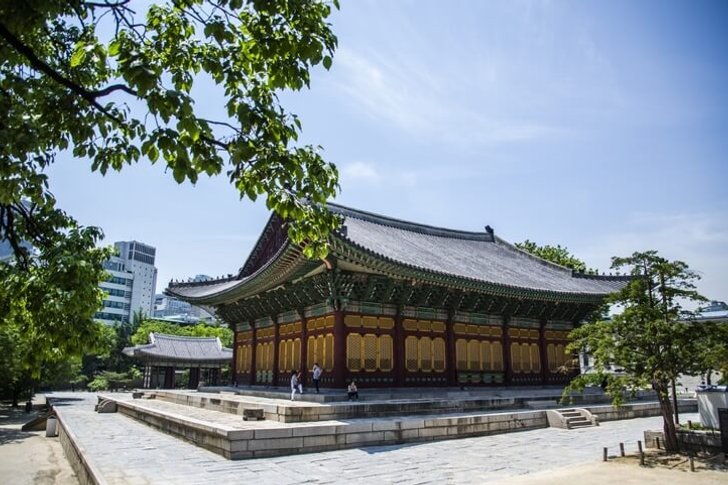
Myeongdong shopping area
Myeongdong is located on a small area of 1 km². About 3 thousand people live compactly here. This area is one of the most visited places in Seoul due to the large number of shops, stalls and Korean restaurants. The quarter also houses a 19th-century neo-Gothic Catholic cathedral and a theater.

Gwangjang Market
The largest fabric and clothing market in the South Korean capital, where you can buy national costumes and magnificent wedding dresses made of magnificent silk and worth a fortune. The average cost of one such dress exceeds $1,000. Souvenirs and products are also sold on Gwangjang. Tourists visit the market for the sake of interest and color, local residents regularly come here for shopping.

Insadong area
The area is located in the center of Seoul. It consists of the main pedestrian street and several side alleys adjacent to it. Previously, wealthy citizens settled on the territory of Insadong, today it has turned into a popular shopping district. There are antique shops, cafes, small spontaneous markets selling unique handmade products, as well as tea houses.
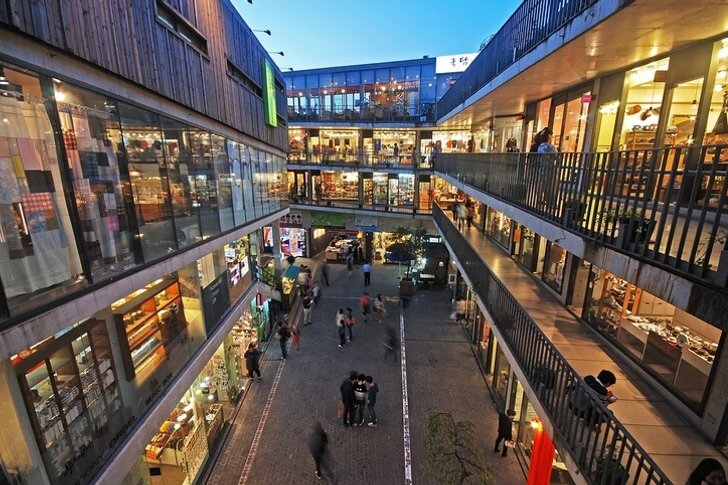
Bukchon Village
A traditional Korean settlement located in the central part of the capital. Although Bukchon is more like an open-air museum, it is a full-fledged residential area. People live in one-story old houses with a tiled roof. Their way of life is strikingly different from the habits of a typical inhabitant of a big city. Buildings made of clay, stone and wood look quite exotic against the background of modern skyscrapers of the capital.
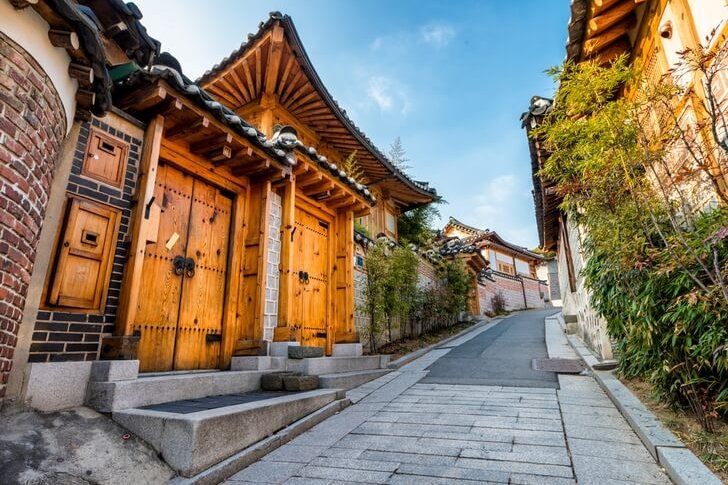
cheonggyecheon
An 8 km long landscape park in the central region of Seoul, named after the Cheonggyecheon stream that flows through its territory. The square was laid out as part of a large-scale reconstruction of urban infrastructure in 2005. Previously, there was a busy highway here. Immediately after the opening, the park became a favorite place for walking among the townspeople.
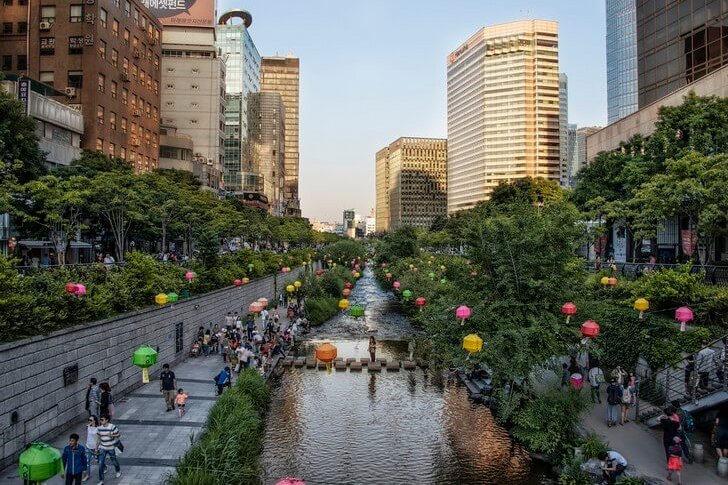
Temple of Chogyesa
The current church building was erected in 1910. Earlier, in the 14th century, an older shrine stood in its place, but it was destroyed during the Japanese-Korean wars. In connection with the long persecution of representatives of Buddhism that took place during the reign of the Joseon Dynasty, the temple has an important symbolic meaning for Koreans.
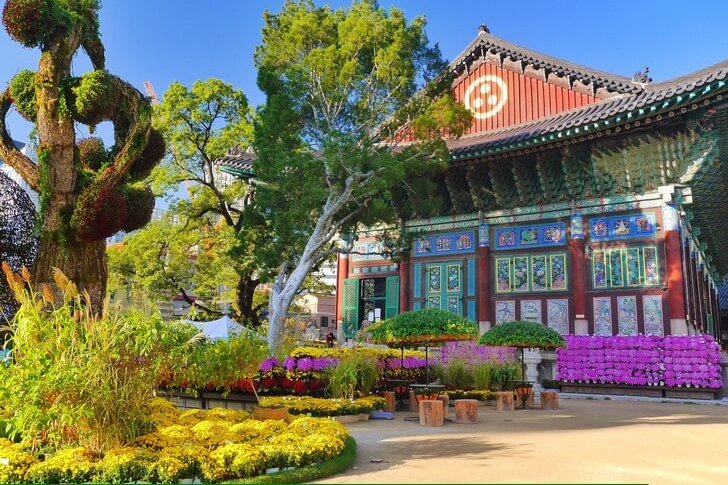
Jongmyo Shrine
Confucian temple, built in 1394 under the ruler Taejo. For a long time, it played the role of the royal shrine of the Joseon Dynasty. Funeral ceremonies, rituals of commemoration of the ancestors of Jongmyo Chere were held here, as well as food and drinks were sacrificed to spirits and gods. Jongmyo is included in the list of UNESCO World Heritage Sites, as it represents an important historical and cultural value.
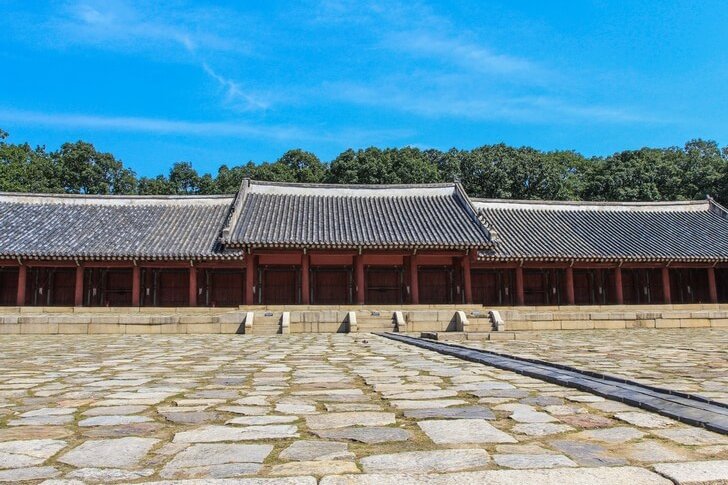
Bongeunsa Temple
The building was erected in the VIII century. It is one of the oldest temples in the country. Unfortunately, the original buildings have not survived to this day, but during the reconstruction, the architects tried to recreate the historical appearance as much as possible. The building is a classic example of Korean architecture, characterized by a curved roof and a pillared façade.
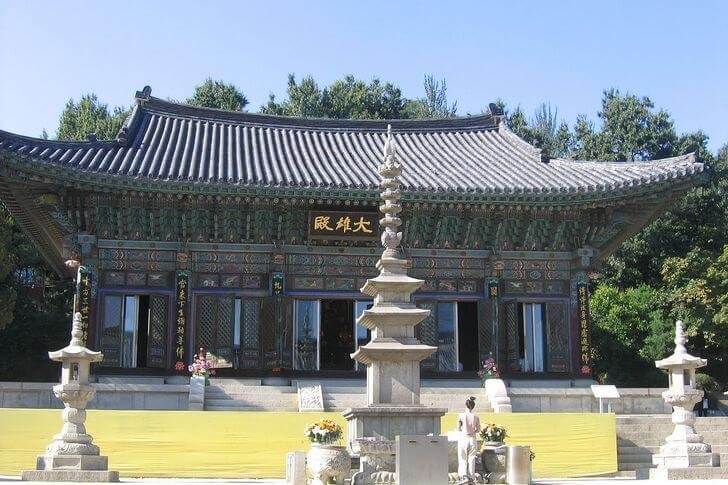
Myeongdong Cathedral
Seoul Catholic Cathedral, located on the street of the same name. It was erected at the end of the 19th century at the end of the Joseon Dynasty, when representatives of various religious denominations felt more free. The building was built in a picturesque neo-Gothic style. Its external facade looks quite modest, as it is made without frills and decorations, but this does not spoil the graceful appearance of the temple.
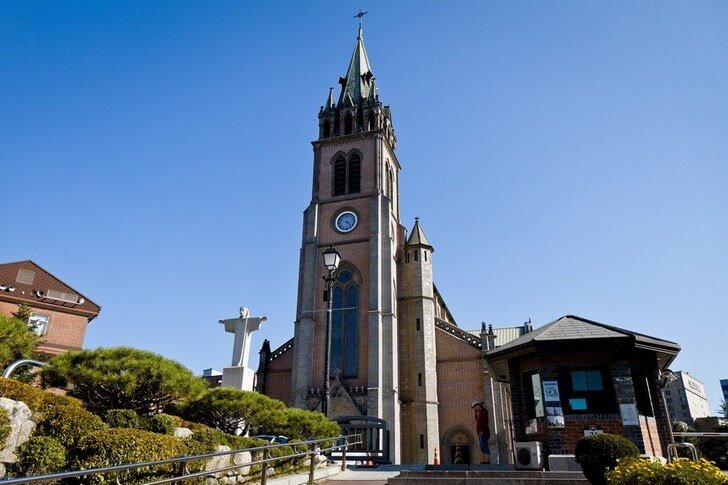
Republic of Korea War Memorial
An impressive museum complex located in the former army headquarters in the historic center of Seoul. The exposition consists of weapons, military equipment, military vehicles, as well as items related to the history of the state. The memorial was opened in 1994. An impressive part of the collection is devoted to aspects of the conflict between North and South Korea.
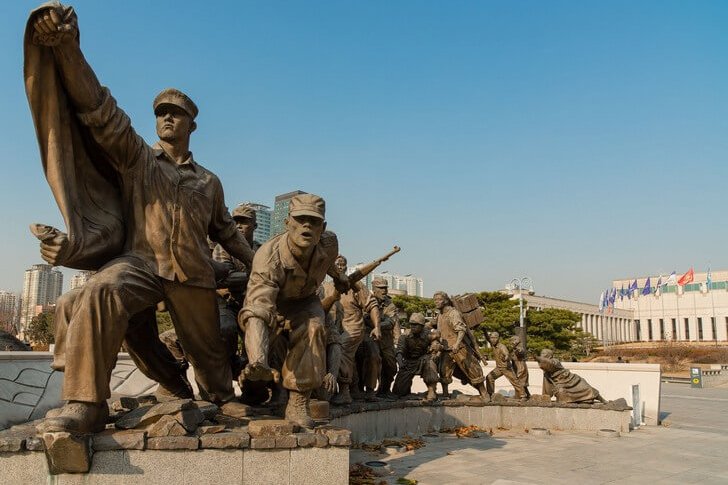
National Museum of Korea
The largest art and cultural center of the Republic of Korea, which is included in the list of the most visited museums in the world. Several million people visit here every year. The rich collection covers the time period from the Stone Age to the present day. Here you can see ancient artifacts, luxurious royal jewelry, unique folk art and other interesting things.

National Folk Museum of Korea
The museum is located in one of the buildings of Gyeongbokgung Palace. Its collection consists of exhibits that tell about the life and way of life of Koreans before the Joseon Dynasty came to power. Some of the exposition is located in the open air. The museum was established with the assistance of the American government in 1945. The exposition is divided into three large sections, which are devoted to various aspects of the life of the Korean people.

Seoul Arts Center
A modern exhibition complex, on the territory of which interesting cultural events are constantly held. It was opened in 1988. Theater troupes constantly perform here, exhibitions of artists, educational lectures, and festivals are held. The Arts Center consists of a concert hall, a musical theatre, three museums and a street stage.

Theater "NANTA"
A small theater, designed for several hundred seats, where very unusual performances are given. Actors play all sorts of household and kitchen utensils, as if they were musical instruments. Buckets, pans, mops, pots, chopsticks, wastebaskets are used. At the same time, they get a fairly harmonious melody. English and Japanese subtitles are used to explain what is happening on stage. The artistic genre called "nanta" was invented by Song Tsen Wang.

Leeum - Samsung Art Museum
The museum was founded in 2004 by the well-known Korean company Samsung. It consists of three separate buildings, built in different architectural styles, and is included in the list of the most original museums in the world according to some tourist guides. Keep in mind that the exposition has nothing to do with Samsung products. Lovers of contemporary art will especially like the museum.
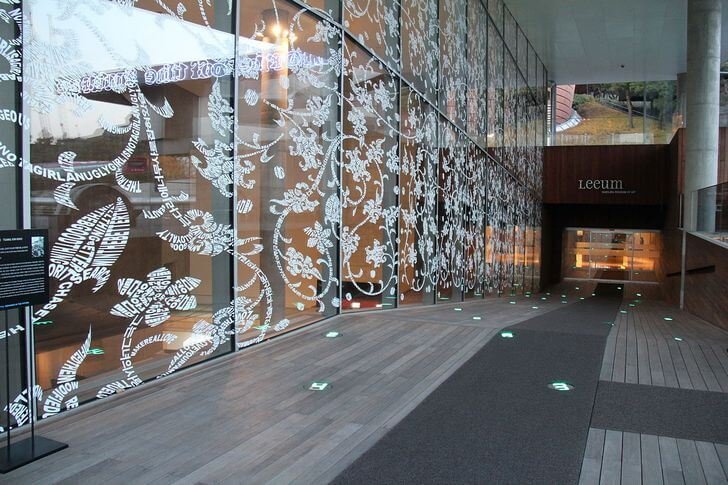
Seodaemun Prison
The prison was built during the Japanese occupation of the Korean Peninsula. It existed from 1907 to 1987, after which it was turned into a museum. Until the middle of the 20th century, Seodaemun kept mainly political prisoners (fighters for the independence of Korea). Today, visitors can view cameras and historical documents, as well as watch documentaries.
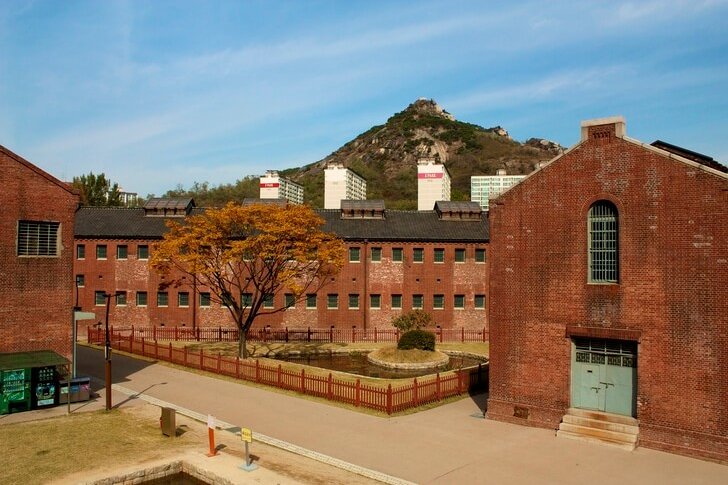
Ewha Women's University
The educational institution is considered one of the most prestigious in Seoul. Students here receive an excellent and sought-after education, with which the doors to the most attractive positions are opened for them. The university was founded at the end of the 19th century by the American missionary M. Scranton. More than half of the female politicians in the Republic of Korea are Ewha graduates.
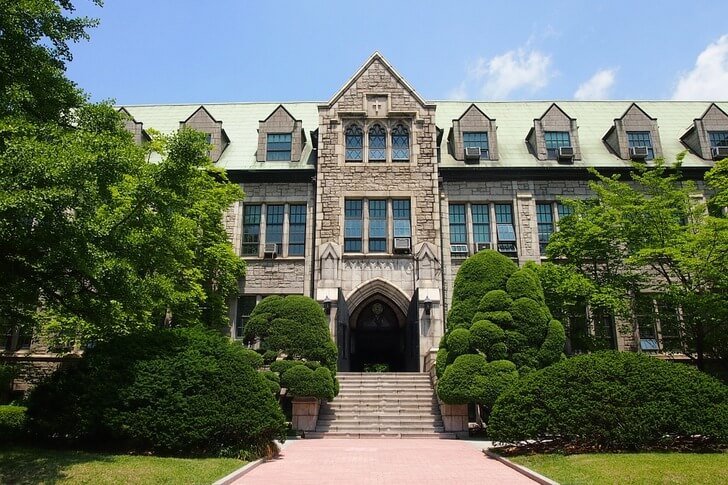
Dongdaemun Design Plaza
The building is located in the Dongdaemun area. It was designed by architect Zaha Hahid, known for her futuristic designs. The structure is made in the form of rounded shapes flowing into each other. Inside are designer shops and exhibition galleries. Dongdaemun Design Plaza has an impressive glass rose garden that delights tourists.
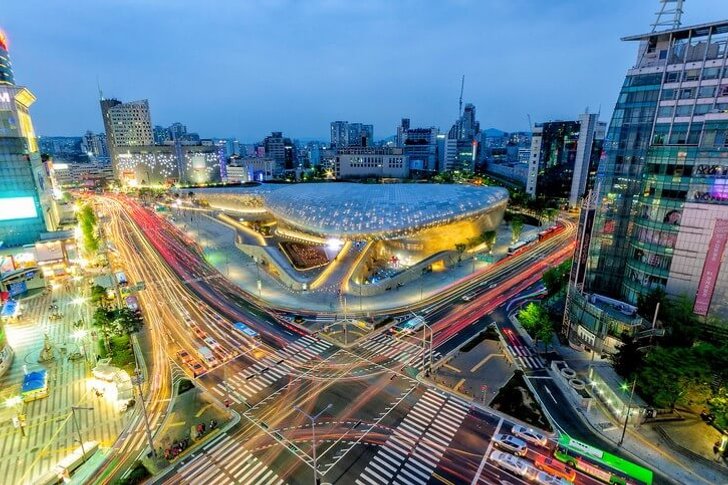
Olympic Park
The park was built for the opening of the XXIV Summer Olympic Games, which were held in Seoul in 1988. After the end of the competition, many of the facilities were turned into public health centers and permanent gyms. There are also museums and memorials dedicated to the Games. The best way to get around the park is by bike.
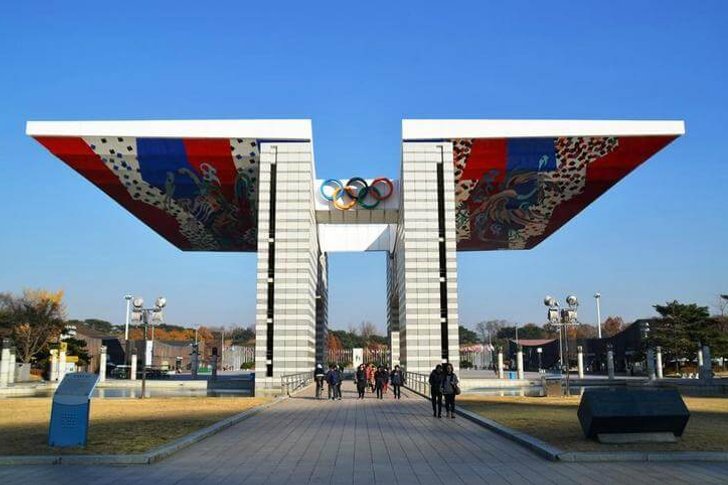
Rainbow Fountain Bridge
An automobile bridge, along the edges of which there is a fountain in the form of a waterfall, overthrowing its jets into the Hangang River. It got its sonorous name due to the beautiful illumination of water flows, consisting of seven colors of the rainbow. From the park located on the shore offers an unforgettable view of the bridge. Many tourists and locals come here to admire the colorful jets of the fountain.
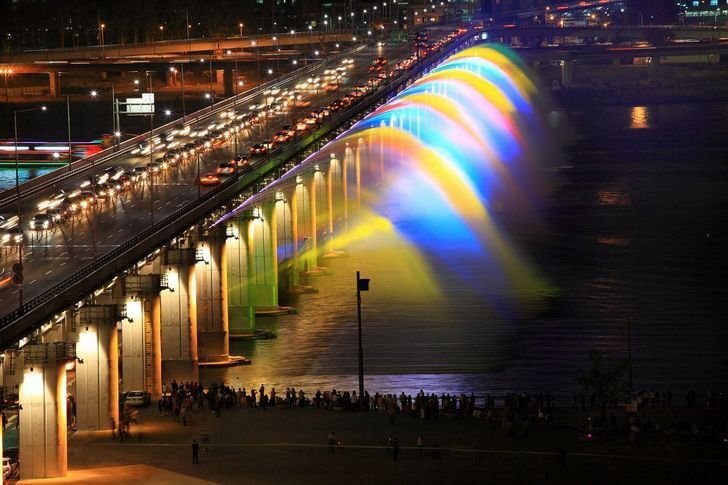
seoul tower
The tower is 271 meters high, built in the 1970s. It became the first tower that provided the city with stable radio and television signals. The structure stands on top of Namsan Hill, so the height of the tower above sea level is about 480 meters. Inside the TV tower there is a museum, an observation deck with a panoramic view of Seoul, a gift shop and a cafe.

COEX Aquarium
The attraction is located in the shopping and entertainment center of the same name, which is located within the prestigious Gangnam-gu area. In addition to marine life, here you can see exotic birds and animals. In total, the aquarium contains about 650 species (40 thousand individuals). For the convenience of visitors, the territory is divided into thematic zones.

Amusement park "Lotte World"
According to the Guinness Book of Records, Lotte World is considered the largest indoor amusement park in the world. In addition to a variety of attractions, there are cinemas, a hotel, a shopping center, an ice rink and a magician's theater. The place is popular with young Korean couples who come here for the day. The park is divided into two zones: one is located under the roof, the other is under the open sky.

Hangang Park
A large green area that stretches along both banks of the Hangang River. It is perfect for walking, family picnics, sports, cycling and relaxation from the bustle of the city. Moreover, in many of its places near the water there are piers, from where you can go on a pleasant river walk. The park was created in the 80s of the XX century.

namsan park
The park is located on the picturesque slopes of the hill of the same name. Despite the fact that the green zone is located almost in the center of the city, several hundred species of animals and plants live on its territory. The architectural dominant of the park is the Seoul TV Tower, which is accessed by a cable car. There is also a museum, a public library and a botanical garden.
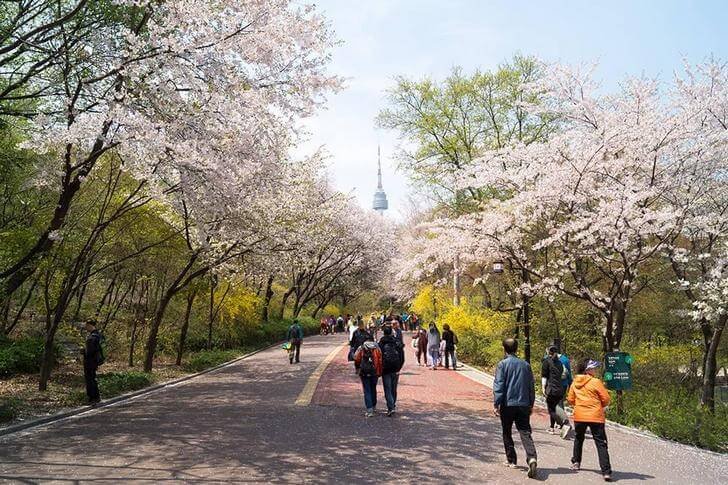
Bukhansan National Park
Bukhansan is located in the city limits in the northwestern part of Seoul. It occupies the slopes of a low ridge with mountain peaks reaching a height of 800 meters. The park is often referred to as the "lungs of Seoul" as this vast green area helps provide fresh air to the multi-million dollar metropolis. Unfortunately, the local ecosystem is under threat due to the large number of visitors.
